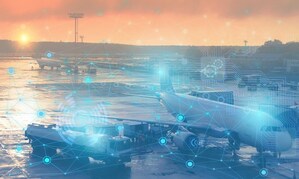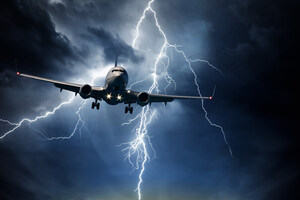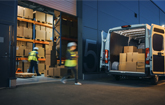Artemis Aerospace explores the most commonly replaced aircraft components
WISTON, England, June 20, 2024 /PRNewswire/ -- Aircraft need plenty of maintenance, both routine and unexpected, to keep them in the air and ensure they are in peak flying condition; lives depend on it. Flight simulators are in demand around the clock to keep pilots and cabin crew up to scratch with their training. Artemis Aerospace looks at the components which are most regularly replaced in each and the reasons why.
Aircraft are heavy duty workhorses and with airlines aiming for the minimum amount of AOG time, there's a considerable amount of wear and tear which needs continual attention.
Flight simulators enable pilots to train in every type of weather condition, for every possible eventuality, over any country and at any airport. The type of wear and tear which takes place on a simulator is very different to a real aircraft, but the need to keep them fully operational is no less urgent.
So which parts of an aeroplane need the most regular updating? Do flight simulators wear out the same parts just as fast, or does the pattern of dilapidation deviate? There are two distinct types; cosmetic wear and tear, which includes worn upholstery, broken armrests and recliners, chips, stains and spillages. It's important to an airline's brand and reputation to present an aircraft in the best possible state, but issues like these aren't necessarily essential to passenger safety. Then there is operational wear and tear, such as worn tyres or brakes and malfunctioning navigational equipment, which is absolutely crucial both for safety and compliance with rigorous regulations.
Aircraft are subject to stringent security inspections after every flight; for example, the Federal Aviation Administration (FAA) requires commercial operators to undertake an inspection after every 50 hours and 100 hours of flight time. The 50-hour inspection covers the exterior (wings, fuselage, tail and landing gear), the interior, the engine, battery and landing gear system. The 100 hour check is more comprehensive and covers the overall aircraft structure, engines, propellers, landing gear, electronics and radio and navigation system.
Such is the demand for flight simulation training that simulators are generally in use for 22 hours a day, 7 days a week. This leaves a very short window for regular inspections and necessary maintenance, and a rapidly increasing backlog if a problem is found.
Commercial aircraft have many different flight patterns and resulting wear and tear issues. Short domestic flights rack up a surprisingly large amount of wear and tear in comparison to long haul flights. For example, every day there are between 22 and 40 flights direct from London to Edinburgh with an average flight time of 1 hour and 20 minutes. Whilst those won't all be the same plane, that's a lot of people shuffling in and out of seats, putting tray tables up and down, sliding hand baggage in and out of overhead lockers and adjusting the air conditioning, so these are items which will need very regular replacement. On long haul flights the seats will often be put up and reclined back but, visits to the cloakroom aside, the passenger will mostly stay seated.
On an aircraft, some of the parts most frequently needing replacing are wheels and brakes; the strain placed on them during take-off and landing is immense. Batteries are another, and windows and window frames need regular changing due to cracking and the wiring round them becoming damaged. The type of climate an aircraft flies through can also make a difference to wear and tear. If a plane regularly gets iced up, propellers, engine fan blades and parts of the wings can become damaged.
Simulator training is used for both pilots and cabin crew and will usually involve emergency training. Cabin crew in an aircraft are constantly busy and, apart from take-off and landing, rarely get the chance to sit down, so their seats will get less wear than the passengers' ones. In a crew trainer, however, different teams will be regularly up and down responding to whatever issue is thrown at them; the wear on seats will therefore be higher. The controls in a flight simulator are also likely to need regular replacement. They get much more use than those on a larger aircraft, as pilots will be using them all the time to rehearse their reactions to emergencies, quite likely with slightly sweaty palms as they encounter situations they will hopefully never come across in real life! In contrast, especially on long haul flights, the pilot will be able to use autopilot for lengthy stretches of the journey and remain hands off.
Flight simulators are complex machines. The visual systems arguably require the most maintenance with cathode ray tubes, printed circuit boards (PCBs) and power supply units getting a lot of punishment. Switches can be used roughly in emergency situations, fuses can blow with overuse and the hydraulic systems which keep the simulator moving will be in constant use. In addition, users of flight simulators get through quite a number of oxygen masks during emergency training due to rough handling and the sheer number of situations in which they are required to be utilised.
Whether it's an aircraft or a flight simulator, time spent out of action due to damaged or malfunctioning components is both time and money wasted; this is where a reliable component supplies specialist, like Artemis, is crucial.
Photo - https://mma.prnewswire.com/media/2443667/Artemis_Aerospace.jpg
SOURCE Artemis Aerospace

WANT YOUR COMPANY'S NEWS FEATURED ON PRNEWSWIRE.COM?
Newsrooms &
Influencers
Digital Media
Outlets
Journalists
Opted In






Share this article